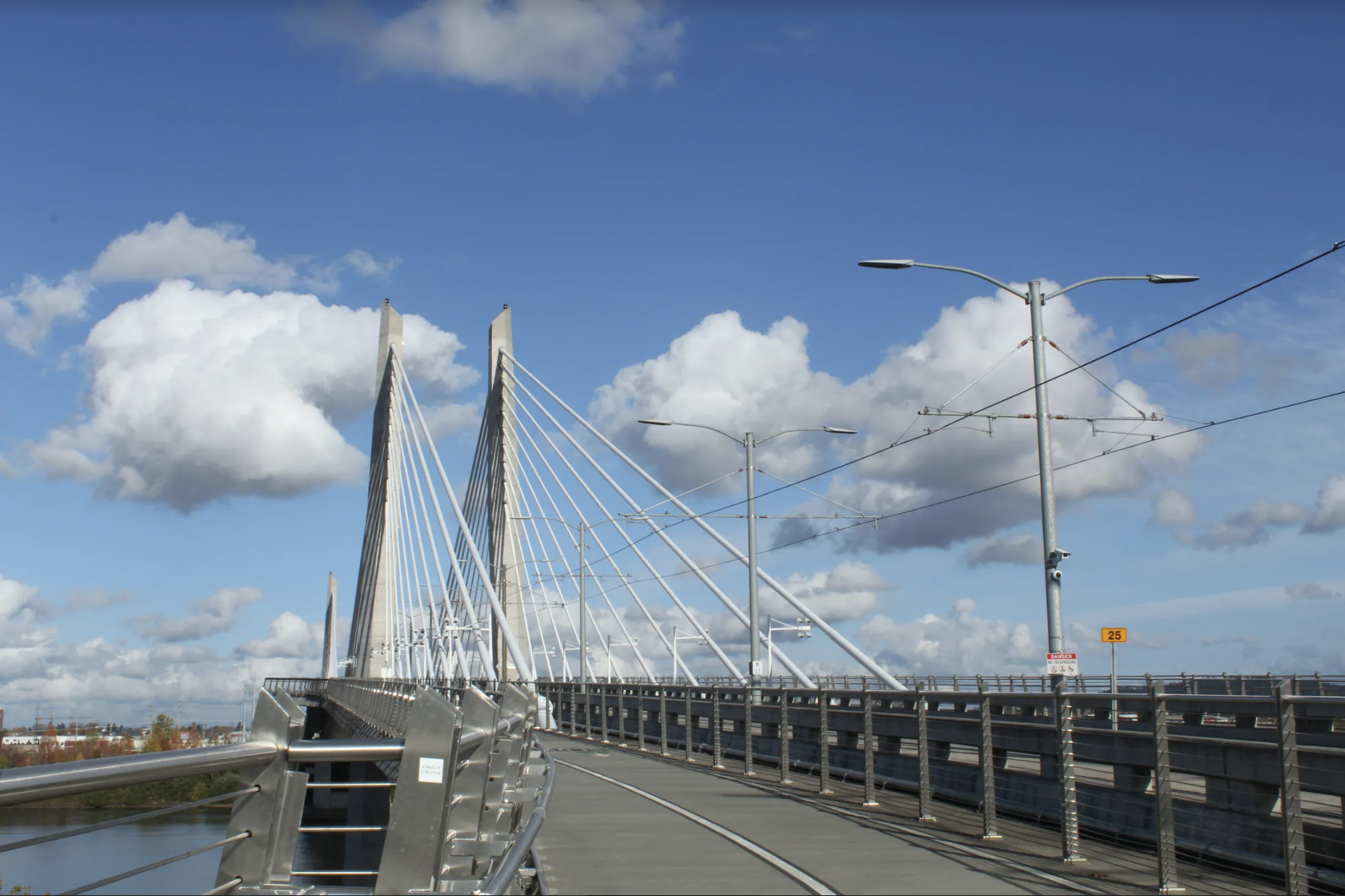
PORTLAND’S MANY bridges are arguably the best-known landmarks of the city. 12 bridges span the Willamette River within city limits, while three more cross the Columbia River on the city’s northern edge. Most are drawbridges, which lift as needed to let barges pass through the city. There is no regular schedule for when the bridges lift. Nearly every bridge is different in construction style, lifting mechanism and traffic carried. Here is a rating of some of Portland’s most iconic bridges, from north to south.
St. Johns Bridge – 9/10
You may not know where to find it — this northernmost crossing of the Willamette River is tucked away in a secluded corner of Portland — but you have certainly seen pictures of the St. Johns Bridge. Its bright green Gothic styled towers have appeared as the logo for the Bridgeport beer company, in ads for Travel Oregon and in several movies. The St. Johns Bridge is Portland’s only suspension bridge, and when it was completed in 1930, it was the highest bridge in the nation and the longest in the American West. It was not, as local folklore claims, designed by the same person who went on to design the Golden Gate Bridge. If this landmark has a flaw, it is how remote it is relative to the rest of Portland. Unless you live in the St. Johns neighborhood, there is little reason to ever cross it other than to admire its beauty.
Fremont Bridge – 7/10
Another of Portland’s high-level, non-lifting bridges, the Fremont Bridge soars over industrial North Portland, with a graceful arch visible across much of the city. No silhouette of the Portland skyline is complete without the Fremont Bridge. Both levels of this double-decker crossing carry four lanes of Interstate 405; unfortunately, it cannot be crossed on foot or by bicycle except on a single day in August, when the annual Bridge Pedal bike race uses the upper deck.
Steel Bridge – 8/10
This is a bridge-shaped bundle of superlatives: It is the only drawbridge of its kind in the world, and it is one of the planet’s most multimodal bridges, according to the Oregon Department of Transportation. The lower deck of the Steel Bridge carries long-haul freight and passenger trains, as well as a path for walking and biking. The upper deck carries cars, buses and MAX light rail trains. Furthermore, the two levels of the bridge can lift independently of each other. Usually, the lower deck will rise vertically into the upper deck to accommodate the passage of ships without disturbing the upper deck’s traffic. But if a particularly tall ship comes through, the upper deck will lift as well.
Marquam Bridge – 4/10
Carrying Interstate 5 diagonally across the river, the vertiginously high Marquam Bridge has all the charm of an oil platform. It is the most-used bridge in Oregon according to the Oregon Department of Transportation, carrying 140,000 vehicles every day, but it is hard to imagine it was designed for that many, as the bridge’s traffic slows to a crawl in both directions no matter the time of day. At least the top deck provides a good view of Mount Hood on a clear day.
Tilikum Crossing – 9/10
The Tilikum Crossing’s 2015 debut made it Portland’s first entirely new bridge since the Fremont Bridge opened in 1973. The Tilikum Crossing may rival the Steel Bridge as the city’s most unique bridge. As Portland’s first and only cable-stayed bridge, which has a style similar to that of a suspension bridge, Tilikum Crossing is also the longest transit-only bridge in the nation. Wide sidewalks on both sides carry bike lanes and pedestrians, while buses, streetcars and MAX trains use the lanes and tracks in the center.
The bridge boasts an array of quirks: For instance, the spotlights on the bridge’s towers at night reflect the speed of the Willamette River below it. When the river is slow and placid, the lights are green; as it gets faster, the lights progress through the spectrum to red. The real attraction, though, is under the bridge. Beneath its supports on each end of the river is a massive concave dish, which together with the bridge creates an acoustic effect known as a whispering gallery. By standing in front of the dishes, two people can talk to each other in conversational tones across the river. Exact statistics are hard to find, but the Tilikum Crossing may be the world’s longest-distance whispering gallery, and certainly the only one that spans a river.
Howard Bridge – 10/10
Although its name is somewhat unclear, there are benches around campus that were supposedly made from wood that was “salvaged from the Old Howard Bridge,” implying there is a New Howard Bridge. Either way, with its peaked roof offering a convenient refuge from the rain, and its location high above the trickling creek, our campus has the best bridge Portland has to offer. You may have heard of “winning the Bon,” which means being the last person to swipe your card in for a particular meal service at the Fields Dining Hall. But you can also “win the bridge” by walking across the bridge right as the floodlights turn on in the evening. Currently, this happens around 5 p.m.
You can also “win” other Portland bridges by being the first person to drive across after the bridge has lifted, according to a local tradition invented by The Pioneer Log in November 2021.
Subscribe to the Mossy Log Newsletter
Stay up to date with the goings-on at Lewis & Clark! Get the top stories or your favorite section delivered to your inbox whenever we release a new issue.

Leave a Reply